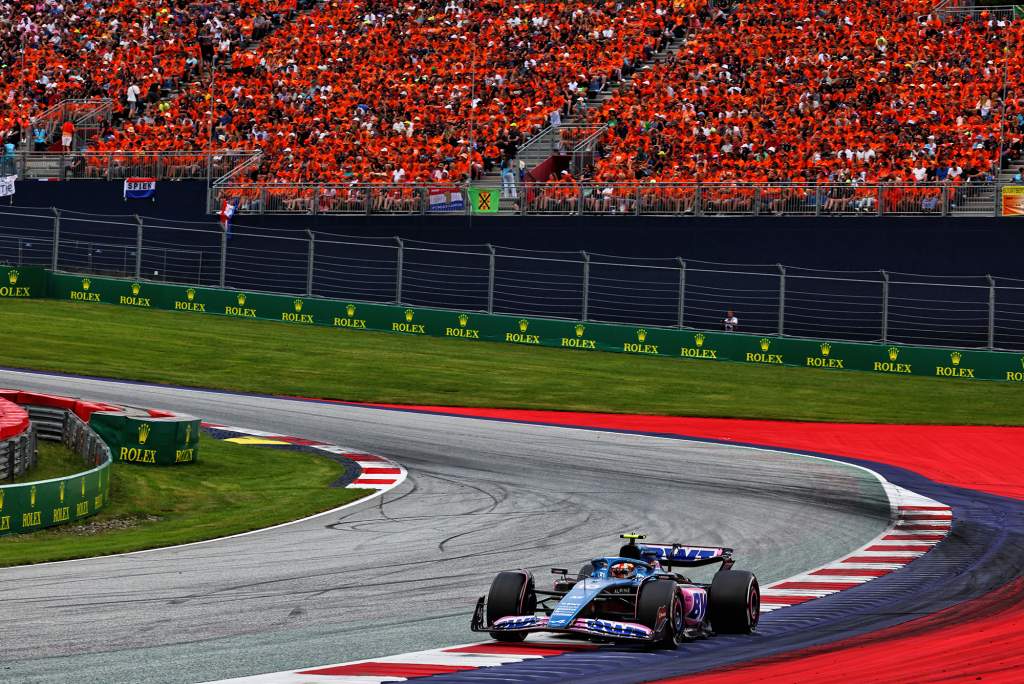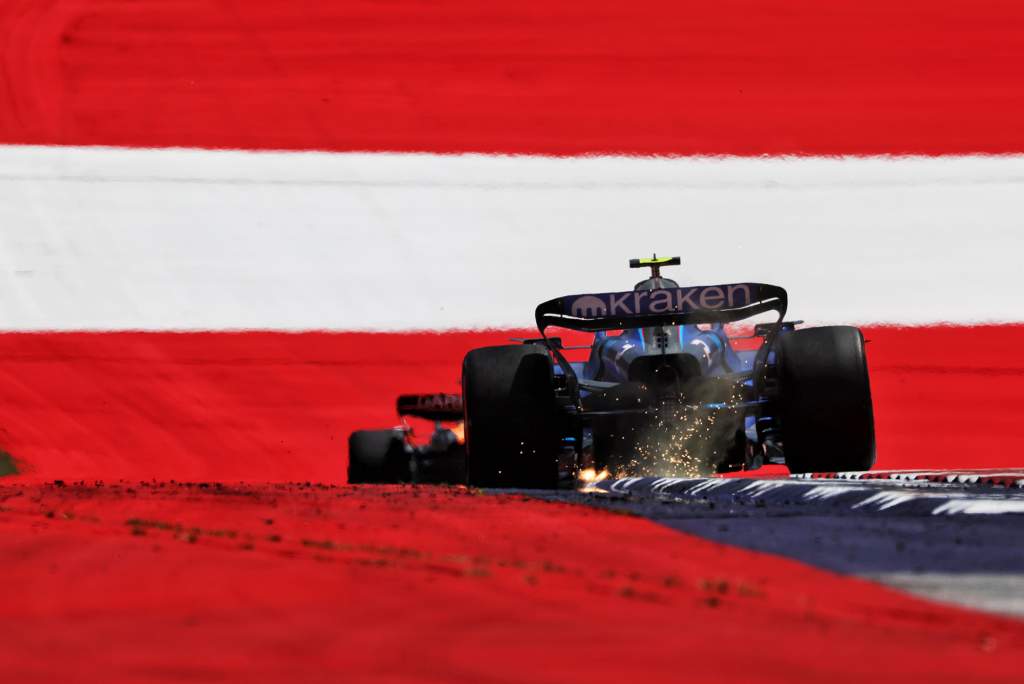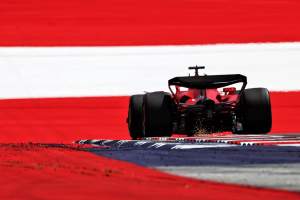Up Next

After 1200+ track limits offences in the Austrian Grand Prix overwhelmed Formula 1’s systems and procedures, an FIA review and an Aston Martin protest left the Red Bull Ring result in total flux.
The final outcome was a further 12 penalties spread across eight drivers, changing the positions of 14 of the 19 finishers in a decision announced five hours after the finish.
Here’s what our writers made of Sunday’s chaotic events and what we think should happen as a consequence:
DRIVERS HAVE TAKEN LIBERTIES – NOW THEY CAN’T
Scott Mitchell-Malm

Has this saga proven F1’s track limits rule is inherently flawed, or has it exposed the fact that drivers have got away with taking liberties at this corner for too long and will rein it in next year now they have been rumbled?
Right now I don’t care about the former, so I’m leaning towards the latter.
This zero-tolerance rule exists for a reason. A couple of years ago there was a lot of criticism about rule inconsistencies and different guidelines for different tracks and corners. The flexibility was a nice idea in principle but seemed to fail in reality.
Apparently, teams and drivers were in favour of a ‘one rule everywhere’ approach. The argument for using the white line is simple: every corner at every track can have a white line denoting the edge, whereas natural deterrents like grass and gravel cannot be applied everywhere.
That is why the final corner of the Red Bull Ring is no longer policed with the exit kerb as the natural limit, even though it would work because drivers who go too far wide there will lose time crossing the kerb edge.
But if we park the discussion about whether the rule to police track limits is right or wrong for a moment, the situation we’ve experienced in Austria is the current rule being enforced properly. And it is a farcical number of offences.
Regardless of the challenge of the track – which is clearly a big factor – I bet if we re-ran this race tomorrow we wouldn’t have nearly as many problems, because drivers now know how closely they’re being watched. They can’t take liberties like before. Blaming it on the track for encouraging it when you know these are the rules doesn’t feel right.
If the white line rule changes in the future, I’d be fine with that. But for now, the drivers need to accept the rule and drive accordingly.
THERE MUST BE PROPER INVESTMENT IN A REAL SOLUTION
Edd Straw

The principle of white lines governing track limits is perfectly reasonable. The penalties for exceeding it effectively reflect time penalties that might be paid for taking a bite of the grass or gravel if a driver overdoes it. It’s an acceptable solution, but it’s far from the best one.
Firstly, it does make F1 look ridiculous. The sheer number of infringements, even when correctly policed, can’t fail to make a bad impression on those watching. The white line is also difficult for drivers to see and offers no sense of feel. Yes, they are paying the price for not leaving more of a margin, but it’s far from ideal from a pure driving perspective.
What it boils down to is the need for what you could call ‘natural’ track limits, so that means something at the edge of the track that causes a time loss if you overrun it. Grass or gravel does that, but can pose safety concerns – even if that’s not the case for F1 cars. But what if a solution were to be found that could satisfy the sporting and safety demands?
Ideally, I’d now suggest the solution but sometimes you need to set your target and through rigorous analysis, R&D and design work, work out the solution. Given track limits are the bane of modern motorsport, tackling this should be a high priority.
So perhaps it’s time for a formalised, well-backed programme to develop some kind of next-generation kerb or surface that can provide this natural limit. If you stray onto it and get out of shape, you can keep your laptime because it’s not a benefit to go there – a bit like a grassy moment on a qualifying lap on an old-school track. But if you go off, it is also safe.
There is another route, perhaps automatic electronic solutions that cut engine power in some way and create time loss. But such a system might pose safety concerns or unfairly disadvantage someone taking evasive action.
That’s why natural track limits is the answer. Set the objectives, throw some resources at it and, if there is such a solution, it will be found. And with a formalised, targeted project, who knows what technology that already exists might be found to help conceive a suitable product.
Until then, this will be a recurring problem.
THIS SHOULD HAVE BEEN TACKLED AFTER QUALIFYING
Gary Anderson

The first thing is if you put a system in place it has to be workable and as far as track limits were concerned what we saw at the Red Bull Ring was that the system the FIA had in place was inadequate.
Now I know hindsight is 20/20 vision, but when we saw what was happening in qualifying and the amount of laptimes the drivers were losing that alone should have rung the alarm bells for the race.
For the sprint it was wet so everyone would be staying away from the damp kerbs. It was qualifying that should have highlighted the potential problems.
We went into a race which we all knew was potentially a problem. Each driver had three free cards, a warning flag and then the next time a penalty. But it would have been very easy to propose at the drivers’ meeting to increase that to five free cards, a warning flag and then a penalty. That would have given more time to analyse the track-limit excursions and for sure there would have been a reduced amount of penalties to deal with.
If the drivers didn’t agree and they wanted to stay with what they had then the onus would have been on them. If they did agree then the penalties could and should have been handed out during the race and if any penalties were still pending when the race ended there should have been a potential penalty sign against the driver’s name.
It really shouldn’t take a team to protest a situation that the governing body is responsible for, and if the FIA’s review was already underway then that should have been made obvious.
GRAVEL ISN’T THE ANSWER
Glenn Freeman

The claims from within F1 that circuits should just add gravel as a ‘natural track limit’ are totally ignorant to how these circuits get by for the other 51 weeks of the year when the grand prix circus isn’t in town.
Gravel traps are expensive to implement and maintain. Are the teams and drivers calling for them willing to foot the bills themselves?
In the lower levels of racing which make up the rest of a circuit’s calendar, you’re more likely to get drivers making errors and going off track. If all of those offs involve cars getting stuck in gravel, that’ll cause more red flags, and more disruption for a lot of racers who aren’t as high-profile (or high-earning) as the F1 stars.
And that’s before you get to test days and track days, which many F1 circuits host. If every time a hobby-level driver makes a mistake you need to red flag the circuit, people who have spent their hard-earned money for an enjoyable (and hopefully productive) day on track miss out on expensive mileage.
Should those people have a worse experience because the best drivers in the world can’t keep their F1 cars inside the white lines?
Eventually, the circuits would lose out on business too. Privateer drivers would get fed up with disrupted running at those tracks, and would run their cars elsewhere. It’s lose-lose.
If gravel traps would keep the F1 drivers inside the track limits, that means it’s possible to do it without them.
The problem here isn’t the way F1 is policing track limits now – it’s the make-it-up-as-you-go-along inconsistent way they were policed for years before we got to this point.








